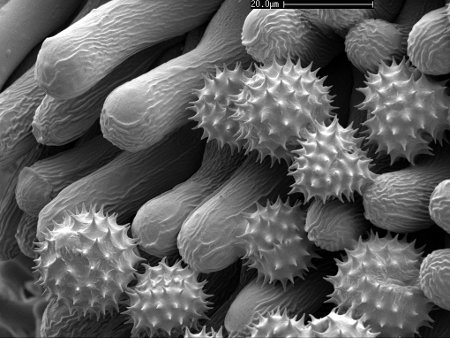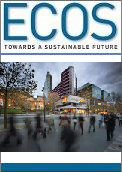
|
Published: 10 October 2011
Pollen up close – and a microscope called Anthony
Amazing images and facts about pollen – the tiny DNA-carrying plant particles vital to agriculture and biodiversity – are the focus of an exhibition at CSIRO Discovery in Canberra coinciding with the city’s annual Floriade festival.

|
|
A scanning electron microscope image showing cut-leaved daisy (Brachyscome multifida) pollen.
Credit: Roger Heady, ANU
|
The exhibition ‘Pollen Under the Microscope’ celebrates the purchase of cutting-edge microscope technology to identify pollen grains and speed up our understanding of nature.
The Discovery exhibition, which runs until 18 October, showcases stunning images of pollens from Australia and overseas including contributions from ANU, Massey University (New Zealand), CSIRO, photo libraries and amateur photographers.
Some of the smallest images come from a new microscope technology, the ‘Pollen Classifynder’, developed by Massey University. CSIRO and the Atlas of Living Australia have purchased a Classifynder microscope and automated image detection system – christened ‘Anthony’ – to rapidly count and identify pollen.
Visitors to the pollen exhibition will learn that:
-
one-third of the food we eat comes from plants pollinated by animals
-
some bees ‘buzz-pollinate’ flowers, vibrating them to shake the pollen out
-
one in five Australians suffers from hay fever and wattle pollen is often incorrectly blamed.
‘Pollen is how most plants propagate, whether it’s wheat in the paddock or wattle in the bush. Humans and ecosystems depend on it,’ said CSIRO biologist, Dr David Lovell.
‘It’s important that we get information about Australia’s biodiversity so we can understand the role of pollen and pollinators in nature in the face of issues like climate change and deforestation.
‘As well as capturing pollen images, the system can use image analysis and machine-learning to classify pollen into species. Developing new and improved classifiers for Australian pollens will be a combined research effort for CSIRO, Australian National University (ANU) and Massey University.
‘We still know so little about our environment. It really is a race against time to get the information we can.’
Anthony's microscope 'brothers' – Gary, Bob, Greig, Ken and Colin – are located around the globe, including Norway and Canada. Some are being used to identify ancient pollen from archaeological sites.
The Atlas of Living Australia – a partnership between CSIRO, Australian museums, herbaria and other biological collections, the Australian Government, and local community groups – is a national initiative aimed at making Australia’s biodiversity information more accessible and usable online.
|
Press play arrow to start |
Source: CSIRO



